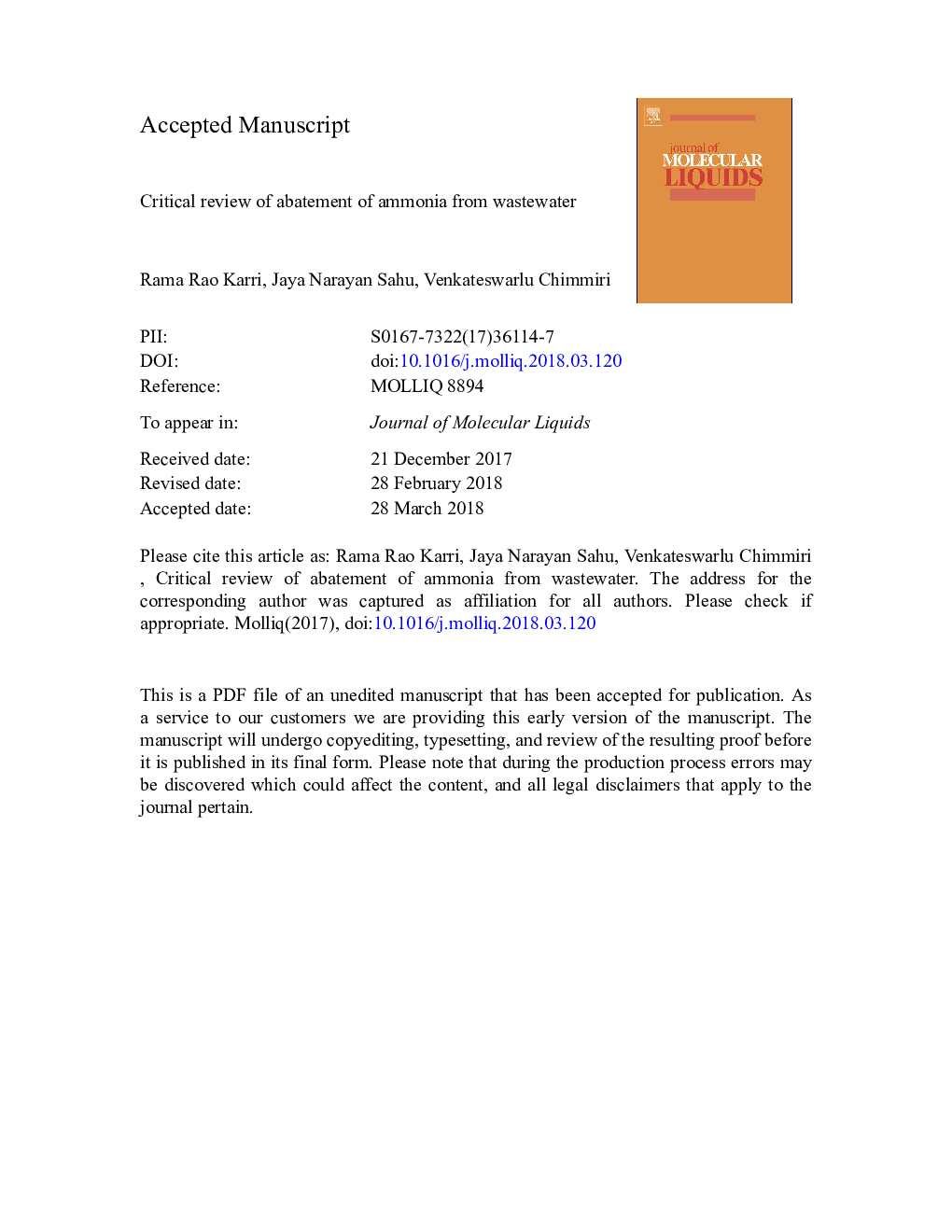| Article ID | Journal | Published Year | Pages | File Type |
|---|---|---|---|---|
| 7842372 | Journal of Molecular Liquids | 2018 | 31 Pages |
Abstract
Ammonia being a most common pollutant found in water streams. As the presence of ammonia and its associated compounds in effluent wastewater discharged to water bodies pose a severe threat to aquatic life and human health by consumption of seafood, removal of pollutants from wastewater is of paramount importance. A number of conventional methods have been adopted for the removal of these pollutants with varying degree of success. This article reviews the technologies implemented for removal of ammonia and its associated compounds from wastewater based on the physicochemical methods and biochemical treatment methods like biological treatment, membrane filtration, ion exchange, chemical precipitation, adsorption and some other technologies such as photocatalytic oxidation, aeration, and air stripping. Merits and demerits of each of the techniques were discussed. This paper also reviews the impact of process parameters on the ammonia removal efficiency is thoroughly discussed.
Related Topics
Physical Sciences and Engineering
Chemistry
Physical and Theoretical Chemistry
Authors
Rama Rao Karri, Jaya Narayan Sahu, Venkateswarlu Chimmiri,
